Check out the range of cool and quirky gadgets on show at the Consumer Electronics Show
From flying cars to roll-up televisions, Las Vegas’ Consumer Electronics Show is full of weird and wonderful inventions. Here is what we know about this year’s occasion.
Technology
Don't miss out on the headlines from Technology. Followed categories will be added to My News.
Las Vegas might seem like a strange place to any visitor — the bright lights, the big fountains, hotels that look like Venice, Paris and Disneyland — but it becomes even weirder when the Consumer Electronics Show hits town in January.
While flying cars and roll-up televisions might grab the most attention, there are also plenty of oddball inventions filling its three main venues.
We walked the halls and stalked some of the strangest (and some strangely useful) gadgets on show.
CONSUMER ELECTRONICS SHOW: WHAT WE FOUND
POCKET DRONES
This could deliver the best and strangest way you’ll ever take a selfie.
The Air Duo is a pocket-sized drone (it weighs just 85g), with one camera on its edge and another below for aerial shots.

Users can turn it on and throw it into the air for it to travel to a safe distance and snap a selfie, or pilot it using a smartphone app.
The four-propeller drone will climb up to 18m in the air (its range is limited by wi-fi) and can fly and film for up to seven minutes per charge.
This new model is due out later this year and, yes, it will be flying into Australia.
GARDEN FRIDGES
Picture this: your high-end apartment is full of stainless steel appliances, clean surfaces and city views. But where do you grow your herbs?
This problem — which many of us didn’t realise existed — was solved by Samsung and LG this year in sophisticated internal garden setups that look very much like fridges.
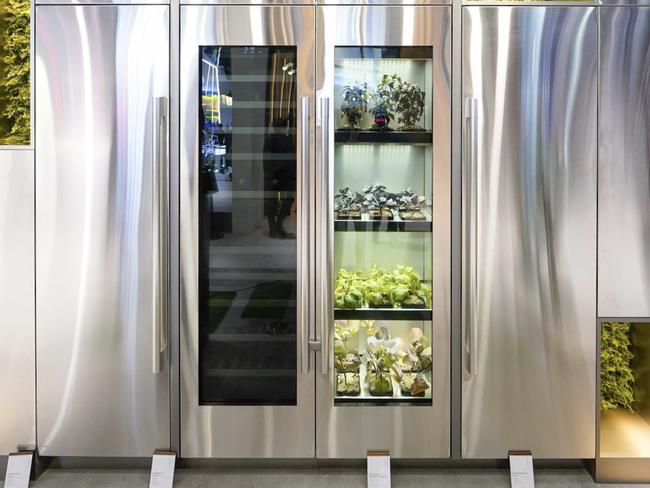
LG’s “indoor vegetable cultivator,” for example, is housed in stainless steel and features six trays for seed pods, as well as LED lights, specialised air circulation, and a water management system.
Keen buyers will have to wait for a launch date to be announced. Or you could just grow some plants on your kitchen bench.
TALKING SHOWER HEADS
US kitchen brand Kohler made a name for themselves with a smart toilet invention.

This year they turned their attention to the humble shower head and launched Moxie, which not only sprays water at you but features a built-in smart speaker and access to voice assistants from the likes of Apple, Google and Amazon.
It might seem a little creepy, though at least it doesn’t feature a camera and can help you play tunes in the shower.
EXOSKELETONS
Taking wearable tech to a new level at CES this year were exoskeletons: powered frames that help users to move.
One model, the Guardian XO, was developed by Delta Airlines and Sarcos to help humans lift plane parts that were just outside their capability and heavy enough to lead to back injuries.
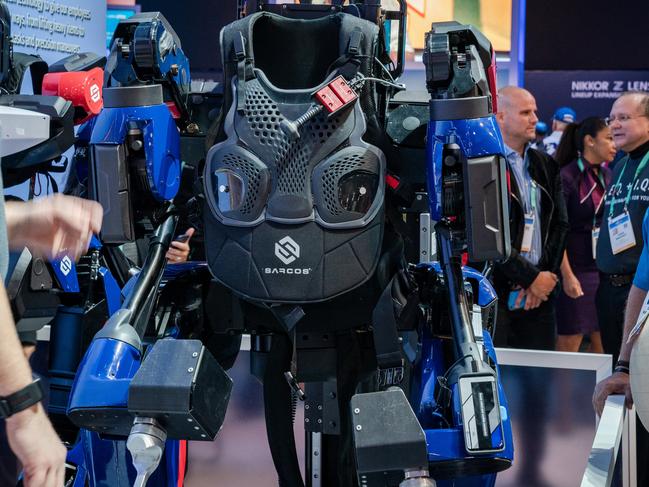
But there are even more exoskeletons on the way.
Samsung also showed a prototype of its GEM suit (Gait-Enhancing and Motivation) that sits around a user’s waist and legs and guides them through exercise.
No word on when it’s making it to real-world gyms.
SMART BELTS
This is one of those inventions that appears ridiculous but the more you hear about it, the more it sounds like a good idea.
Created by South Korean company Welt, the Smart Belt Pro has sensors in its buckle that count steps, monitor how long you stay seated, measure your waist and send the details to a connected smartphone.
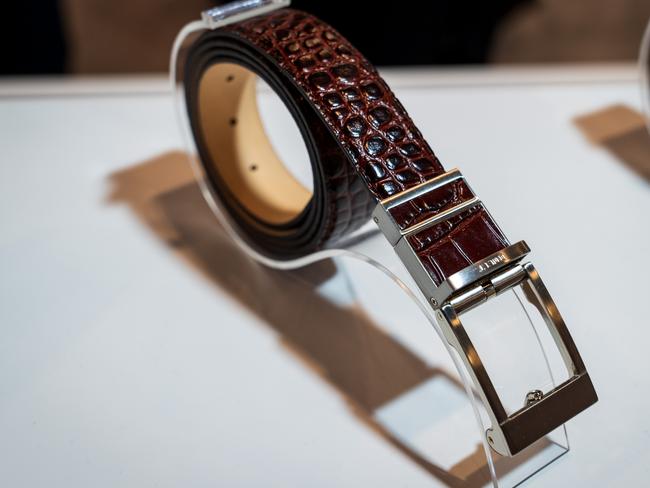
The latest model will also record your gait and use an algorithm to determine whether you’re out of balance and likely to take a spill.
It will cost about $US395 when it launches in April.
WATER BIKES
The Manta5 XE-1 promises to be the first bicycle that can ride on water and, surprisingly, it came straight out New Zealand (though it didn’t ride over to CES).
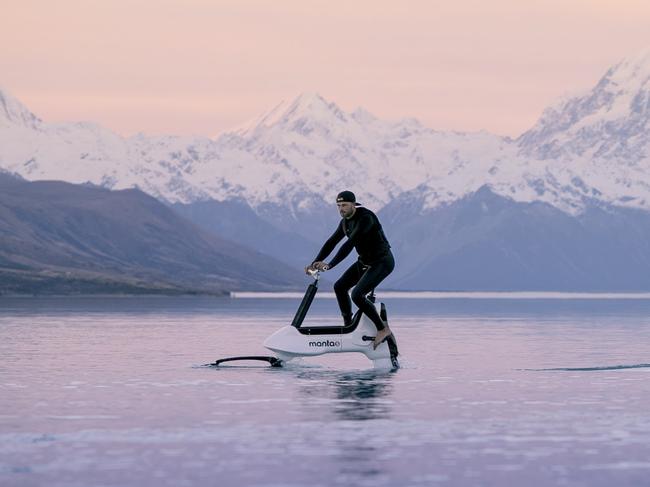
Its founder came up with the idea after dreaming of riding his bicycle alongside dolphins, and the hydrofoil bike uses carbon fibre foils to skid over the top of the water, plus a waterproof motor and battery.
The unique watercraft is expected to launch in Australia late this year and is expected to be priced at $8990.
HANDBAG SCREENS
Chinese manufacturer Royole was one of the first companies with a working folding smartphone, and the company went all out at CES to show it could put its thin, light, and flexible screens on just about everything.
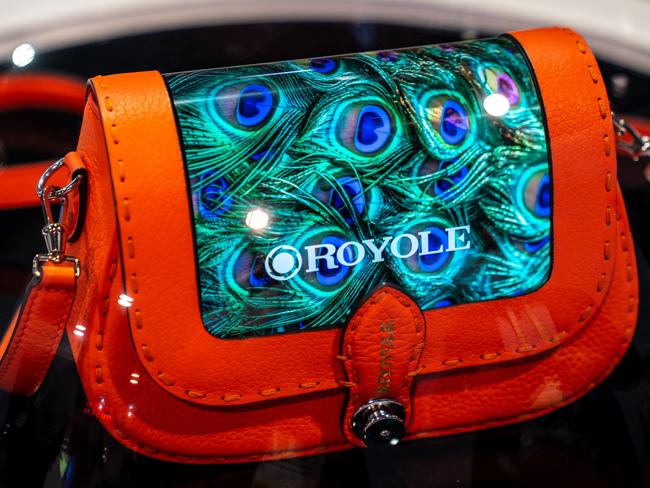
That included hats, T-shirts (albeit clumsily), wrapped around a smart speaker, and on this handbag that can feature a new design every five seconds.
There are no plans to release the handbag, however.
ROTATING TVS
Maybe you’ve shared a photo snapped in a portrait orientation to a TV before and felt disappointed.
This clearly happened to someone at Samsung as the company not only showed off a rotating television screen at CES 2020 but it plans to release the screen in Australia.

The Sero TV sits on a large stand that doubles as a speaker and, when needed, spins to sit in an upright fashion.
The TV will be released in local stores in the first half of the year and, though no price has been announced, it’s expected to do well with Millennial audiences.
ROBOT BARTENDERS
There’s no need to look up measurements or even to invite guests around with this machine. The Bartesian is a single-serve cocktail-making machine.
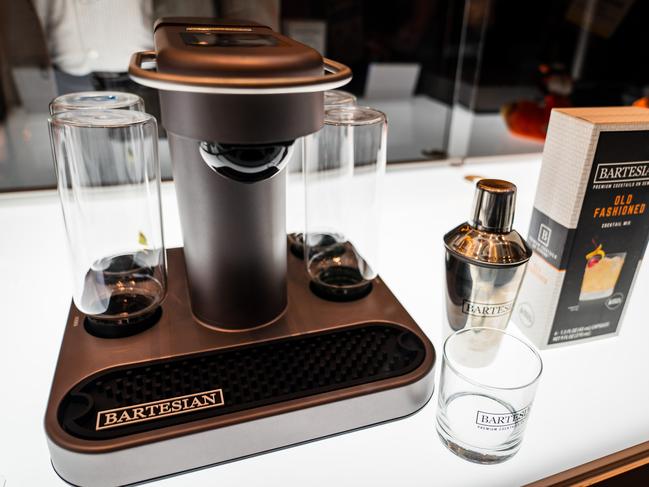
The idea is that users insert their key spirits — vodka, tequila, whisky, and gin or rum — and add a specialised tablet containing the necessary juice, bitters, and flavours to create the cocktail of their choosing.
Users can even specify the strength of the cocktail, ranging from mocktail to strong. It costs $US350 plus refills.
HEATED EYE MASKS
Maybe you didn’t realise eye massages were a thing.
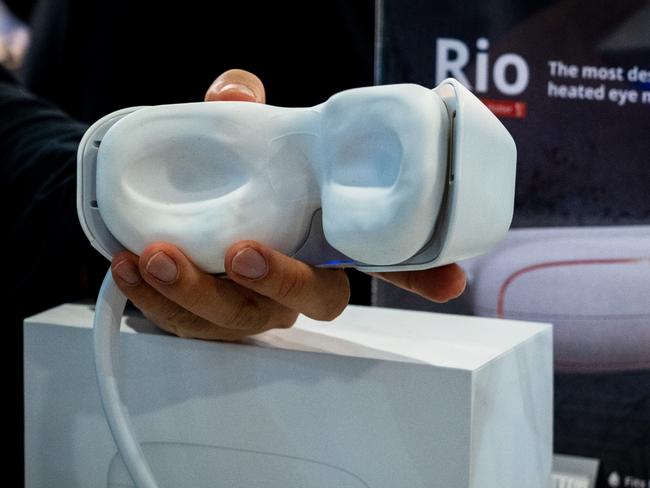
Aurai’s new Rio mask can introduce you to the practice in a stylish fashion as it features a silicon body that moulds to your face, and a discreet bag that heats water and flushes it though the mask, creating a wave effect to relax and improve circulation around your eyes.
It pledges to get rid of fatigue, though medical effects aren’t guaranteed. It’s due to launch next month for $US179.

